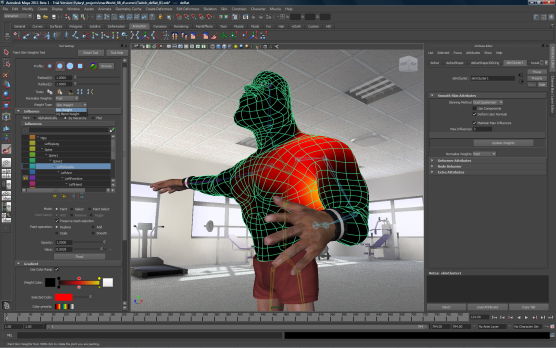

In the third image you can see that the light is more uniform (mainly because the grass has uniform size).

You can see how the shadows (the second image) are random and have many different sizes and shapes. I am not saying that the individual shadows need to be very strong, just that there needs to be a distinct contrast between the tip of each stalk and the root. We need lots of contrast between the top and the bottom of the grass to produce a really realistic image. As a result, very little light reaches the ground. Each stalk of grass casts a shadow on the ground and on its neighboring stalks. You can see that the top of the grass gets plenty of light, and the bottom of the grass has dark, irregular shadows. The red arrows show how the shadows work, and the blue ones show where the light goes. Notice how many different kinds of grass and other plants there are in this little space! There are also some pieces of wood mixed in. In addition, you must vary the size and color of your plants throughout the scene. So, if you want realistic grass, you must use several different kinds of plants in your image. There are some flowers, some weeds, some dried-out (dead) grasses, and so on. This photo contains many different colors, sizes, and types of grass. You will almost never have a single kind of grass in your scene, because in reality there are always other plants mixed in with the grass. Here is the final image that we will create Tutorialįirst, we need to understand what grass looks like in reality.
How to make grass and trees autodesk maya 2017 how to#
You can find this tutorial in the official Community of Autodesk-Maya User In this tutorial, I will describe how to create realistic 3d grass using Maya's Paint Effects. Later I learned how to do it, and now I have created a tutorial on the subject. Some time ago I was trying to find out how to create realistic grass and plants for a university project, but I could not find anything. Hi everybody! My name is Isidro, and I am from Costa Rica.


 0 kommentar(er)
0 kommentar(er)
